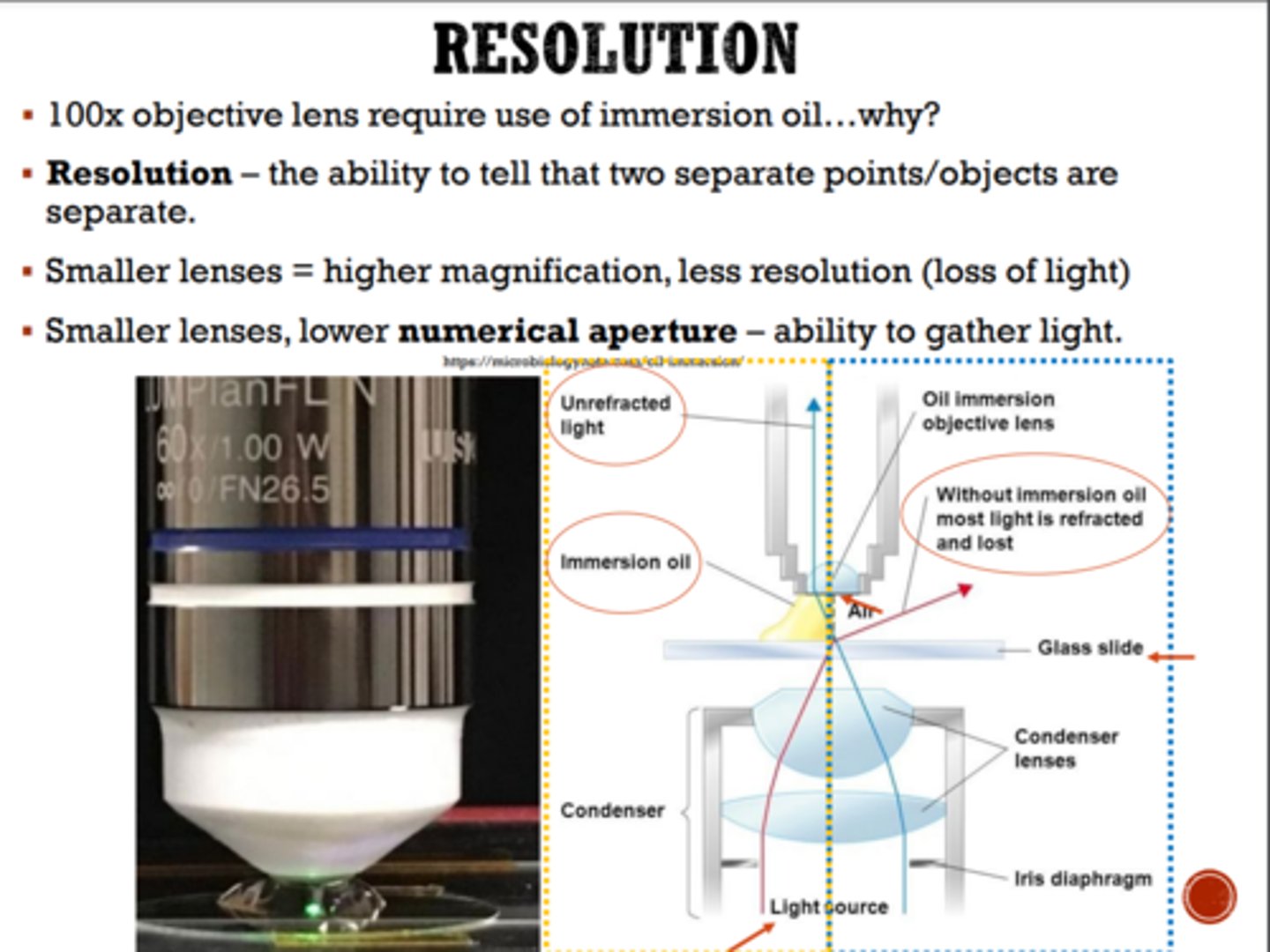Bios 350 Mini Quiz 1
1/34
There's no tags or description
Looks like no tags are added yet.
Name | Mastery | Learn | Test | Matching | Spaced |
|---|
No study sessions yet.
35 Terms
- What is Microbiology
- What are microbes
The branch of science that deals with microorganisms/microbes.
Microbes - Very small organisms, typically can only be seen with a microscope (with exceptions) How did we first discover them
Hippocrates
Greek physician known as "father of Western medicine"
The Hippocratic Corpus - oldest surviving medical books
Hypothesized that diseases had natural causes from within or outside patients or their enviroments
Marco Terenzio Varrone
Roman writer of Rusticae (On Farming) On swamps - "certain minute creatures grow there which cannot be seen by the eye, which float in the air and enter the body through the mouth and nose and there, cause serious diseases." How did we figure it out?
Aristotle
Observed instances where animals appeared in environments without previously being there
First to theorize/hypothesize spontaneous generation • Life could arise from nonliving matter if the material contained "pneuma"
• Theory lasted till 17th century (~2000 yrs) • Scientists' experiments
Francesso Redi
Experiment (1668)
to refute spontaneous generation for visible, living things. "Life comes from life."

Robert Hook
Publishe micrographia(The first manuscript that illustrated objects under the microscope)
Coined the term "cell"
Despite Hooke's early description of cells, their significance as the fundamental unit of life was not yet recognized. Nearly 200 years later,
Antone Van Leeuwenhoek
First to observe singlecelled microbes.
(~1674) - observed protozoa, bacteria (1677) -
observed sperm cells
Needham V Spallanzani
Boiled broth (animal+plant matter) and sealed the flask.
• Broth became cloudy •
Argued spontaneous generation Needham argued spontaneous generation blocked because
1. "life force"/pneuma destroyed from extended boiling and
2. seal blocked re-entry of pneuma.
Disagreements continued...
Lazzaro Spallanzani did not agree with Needham's conclusions, however, and performed hundreds of carefully executed experiments using heated broth. As in Needham's experiment, broth in sealed jars and unsealed jars was infused with plant and animal matter. Spallanzani's results contradicted the findings of Needham: Heated but sealed flasks remained clear, without any signs of spontaneous growth, unless the flasks were subsequently opened to the air. This suggested that microbes were introduced into these flasks from the air. In response to Spallanzani's findings, Needham argued that life originates from a "life force" that was destroyed during Spallanzani's extended boiling. Any subsequent sealing of the flasks then prevented new life force from entering and causing spontaneous generation
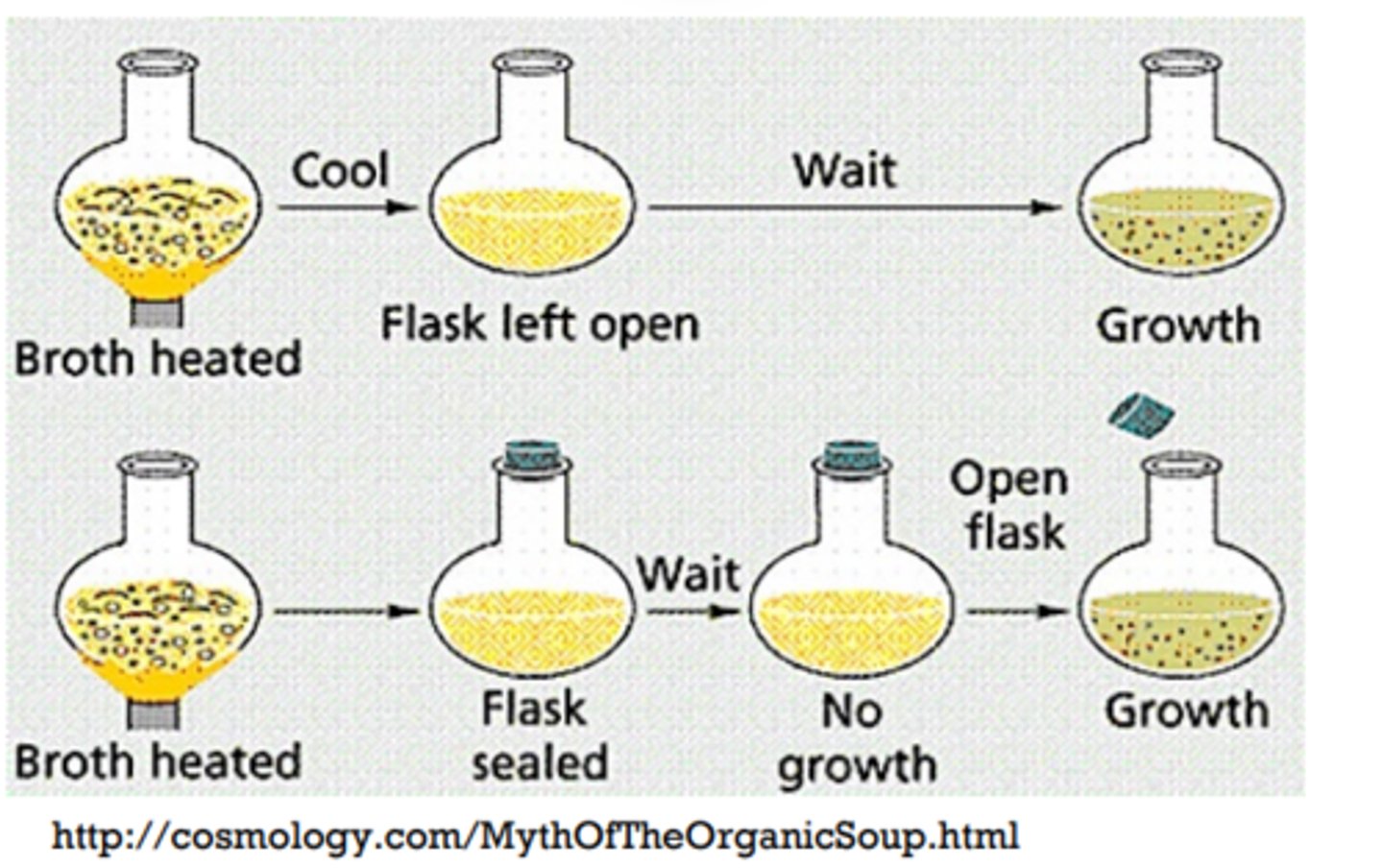
Disproving spontaneous generation
Louis Pasteur (1856) - Why does beer and win spoil? Microorganisms! - they spoil AND ferment
• 1858 - Pasteur takes on challenge (2500 francs award)
• Observed that microbes from air got stuck in a cotton filter • Microbes vs "pneuma"?
Conclusion - Air did not introduce "life force" but rather, microorganisms

Scientific Method spontneus generation
Observation Animals appear in places they didn't use to be
Research
Mice appear in barns with leaky roofs and molded grain Frogs appear along the banks of the Nile River
Flies appear on rotten meat
Microbes appear in nutrient filled liquid
Hypothesis/theory Life could arise from nonliving matter if material contains "pneuma" - life force Test with experiments and analyze data Francesco Redi (1668) John Needham v Lazzaro Spallanzani (1745) Louis Pasteur (1858)
Conclude Living things didn't appear out of thing air because of pneuma. "Omne vivum ex vivo" - "Life only comes from life"; "life is a germ and a germ is life." (1858)
Miasma theory
disease comes from particles in sewage/cesspits that infected humans in close proximity
Ignaz Semmelweis
First signs that disease could be carried to another human being (1847)
• Mothers (puerperal fever) ) observed that mothers who gave birth in hospital wards staffed by physicians and medical students were more likely to suffer and die from puerperal fever after childbirth (10%-20% mortality rate) than were mothers in wards staffed by midwives (1%)
• Died under physicians and medical students (10%-20%)
Semmelweis observed medical students performing autopsies and then subsequently carrying out vaginal examinations on living patients without washing their hands in between. He suspected that the students carried disease from the autopsies to the patients they examined.
• Lower mortality rate under midwives (1%)
• Did students carry diseases from autopsies to patients?
• Suggested handwashing - dropped mortality rates to 1%
John snow
conucted stuidies to London cholera outbreaks (1848)
• Tracked outbreaks to water contaminated by sewage • First epidemiological study • Both refuted the ancient miasma theory
British physician John Snow conducted studies to track the source of cholera outbreaks in London. By tracing the outbreaks to two specific water sources, both of which were contaminated by sewage, Snow ultimately demonstrated that cholera bacteria were transmitted via drinking water. Snow's work is influential in that it represents the first known epidemiological study, and it resulted in the first known public health response to an epidemic. The work of both Semmelweis and Snow clearly refuted the prevailing miasma theory of the day, showing that disease is not only transmitted through the air but also through contaminated items.
Germ theory of disease(Florence Nightingale)
Founder of modern nursing
• First woman to become member of Royal Statistical Society due to skills with numbers and data.
• (1854-56) Was the first to implement hand hygiene in hospitals to drastically save lives. • Showed statistically 16000 of 18000 lives lost were due to poor hygiene
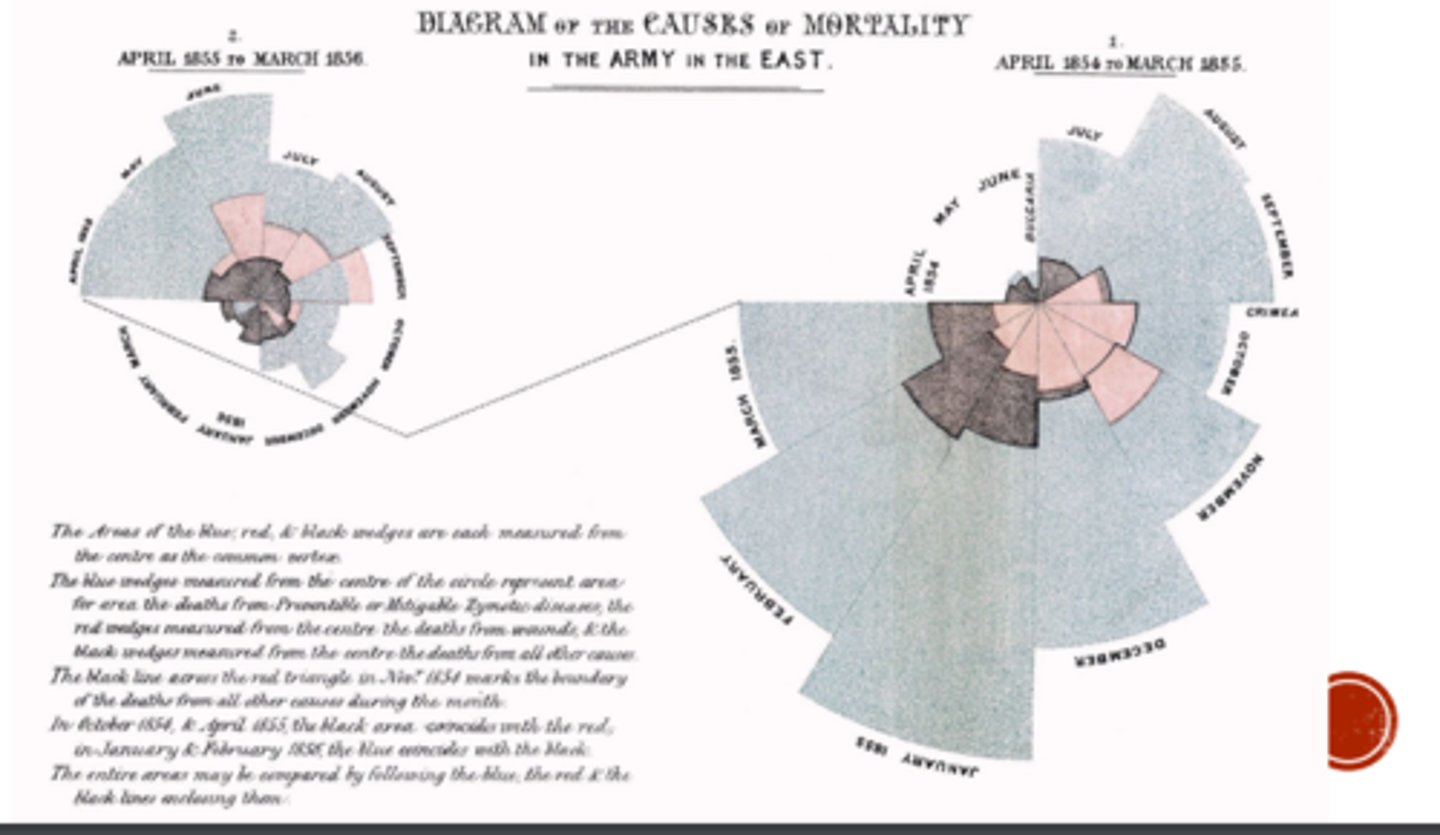
Germ Theory of Disease(lister)
50% of patients died of postsurgical infections What causes Post-surgical infections?
Via Semmelweis and Pasteur demanded handwashing/cleanliness (1864)
Started using carbolic acid (phenol) antiseptic during surgery
Now a standard medical practice.
Credited with first application of germ theory
Germ Theory of Disease (Koch)
A physician & microbiologist - "One microbe, one disease"
Anthrax bacillus had been discovered
Koch wanted to show it caused Anthrax
Established Koch's postulates
1. Took microbes from sick & dead animals to infect healthy mice. a) Result - Mice were sick and died
2. Took microbes from healthy animals
a) Result - Mice remained healthy
3. Took microbes from healthy animals and heat-killed them
a) Result - Mice remained healthy
4. Mixed heat-killed microbes with microbe from sick animals a) Result - Mice were sick and died
5. Grew pure cultures (only 1 microbe) and infected healthy mice a) Result - Mice were sick and died
Endosymbiotic theory
Ivan Wallin (1920s) - tried to culture mitochondria; work dismissed 1960s - discovery of mitochondrial, chloroplast DNA resurrects theory. (1967)
- Lynn Margulis publishes ideas on endosymbiotic hypothesis of the origin of the mitochondria and chloroplast
Microscopy advancements - differentiate eukaryotes & prokaryotes.
Genetic advancements - mitochondrial DNA & chloroplast DNA related to bacterial counterparts
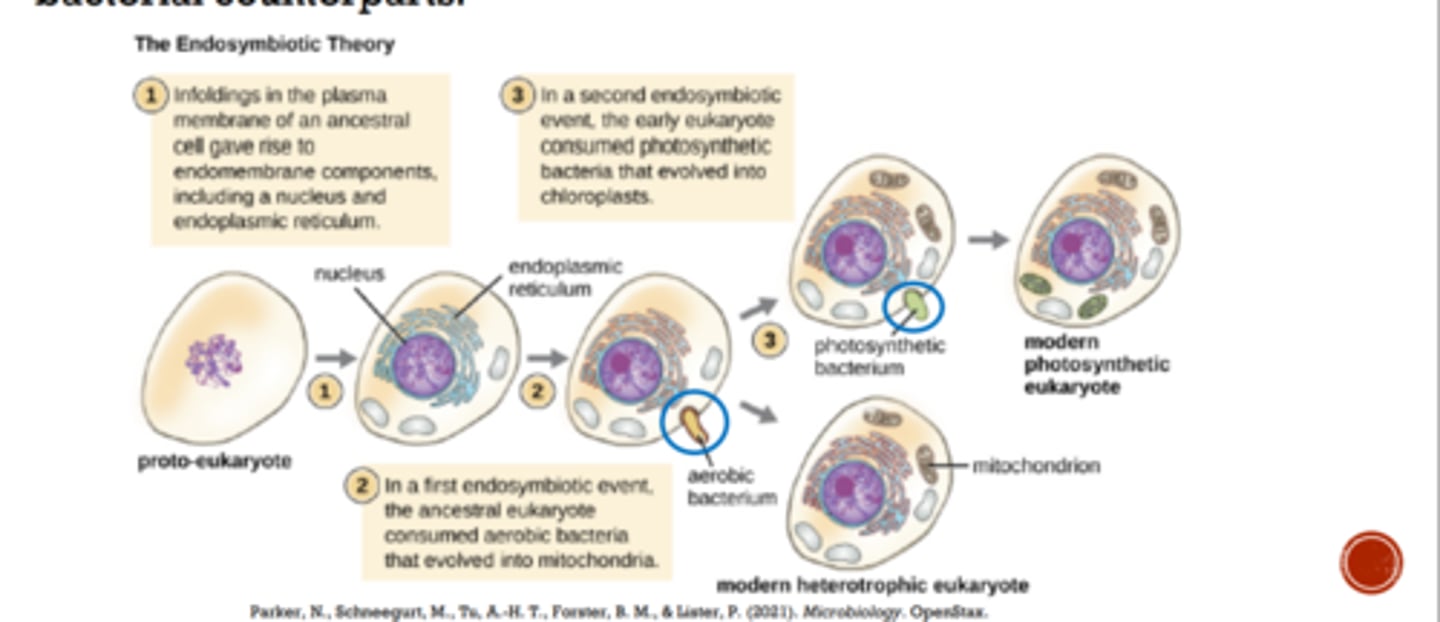
Positive vs Negative control
- A positive control is an experiment control that gives a postive result at the end of an experiment.
- gives a positive result
- gives a response to the experiment
- ensures the success of the test
- Used to test the validity of an experiment
- A negative control experiment is a experiment control that does not give a response to a test
- gives a negative result
- does not give a response
- ensures that there is no response to the test
- used to identify the influence of external factors on the test
-Bacteriology
- Mycology
- Protozoology
- Parasitology
- Immunology
Bacteriology - study of bacteria
Mycology - study of fungi
Protozoology - study of protozoa
Parasitology - study of helminths & parasites
Immunology - study of immune system
Mycology
study of fungi
Prokaryotic microorganisms
-Where are they
-Their DNA
- are they unicellular or multicellular
- How do they divide
- what are there cell walls composed of
- about their metabolism
- Are they photosynthetic
- How are they described
- What are the different types of prokaryotic organisms
Nearly everywhere; some pathogens; includes archaea
Their DNA is not contained within a "true nucleus"
Unicellular and have circular DNA
Divide - binary fission
Most cell walls have peptidoglycan component
Wide range of metabolism allows growth in various environments
Some photosynthetic and some not Typically described by shape and arrangement under microscope
- Typically described by shape and arrangement under microscope
- Staphylococcus aureus Streptococcus pyogenes
Types of Prokaryotic shapes and cell arrangements
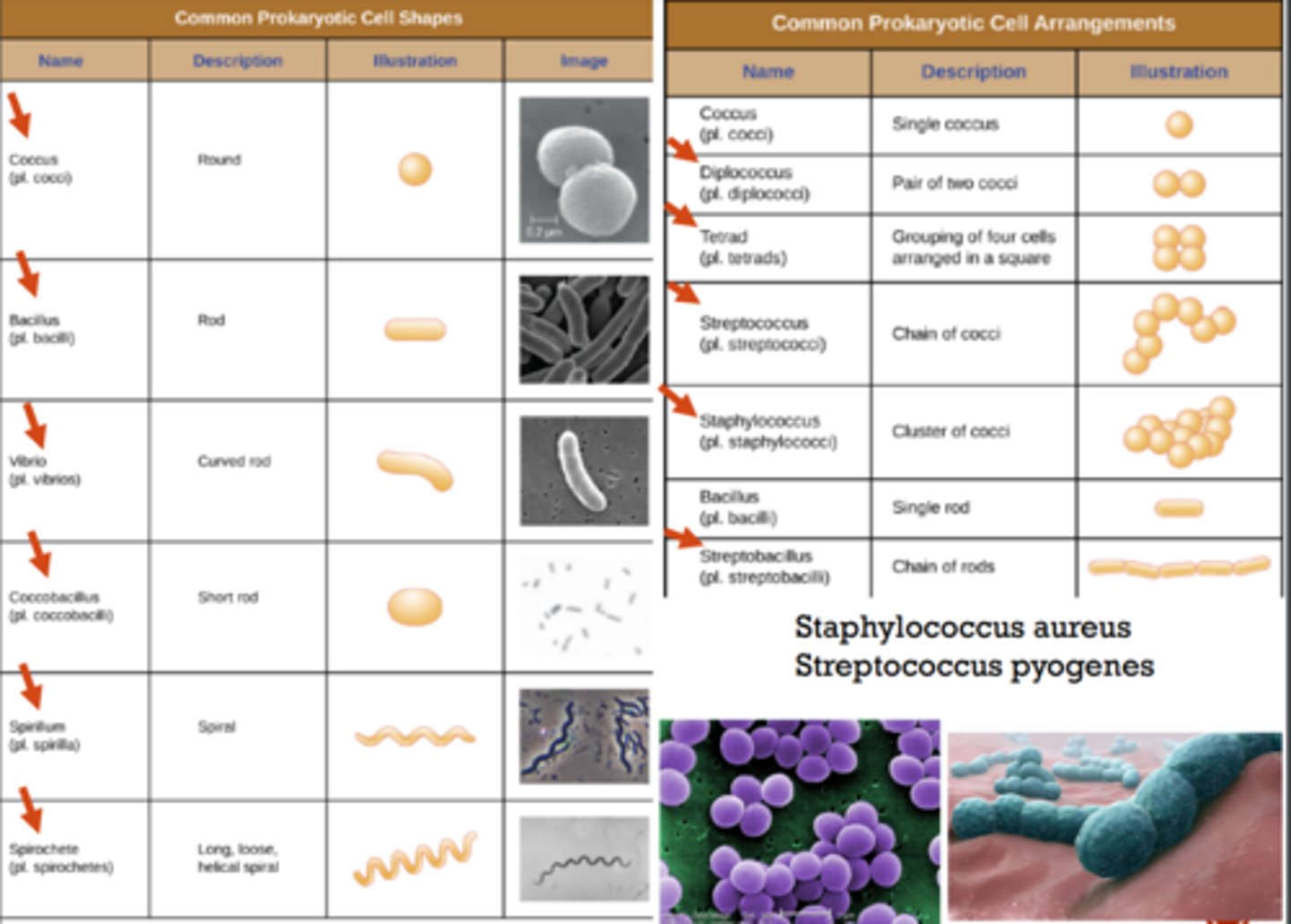
Eukaryotic microorganisms
Eukaryotic microorganisms
Their DNA is contained within a "true nucleus"
Eu - true; karyote - nut
Can be unicellular or multicellular Larger than prokaryotes
Linear DNA, divide-mitosis/meiosis
Examples - animals, plants, fungi, protists
Helminths are NOT microbe
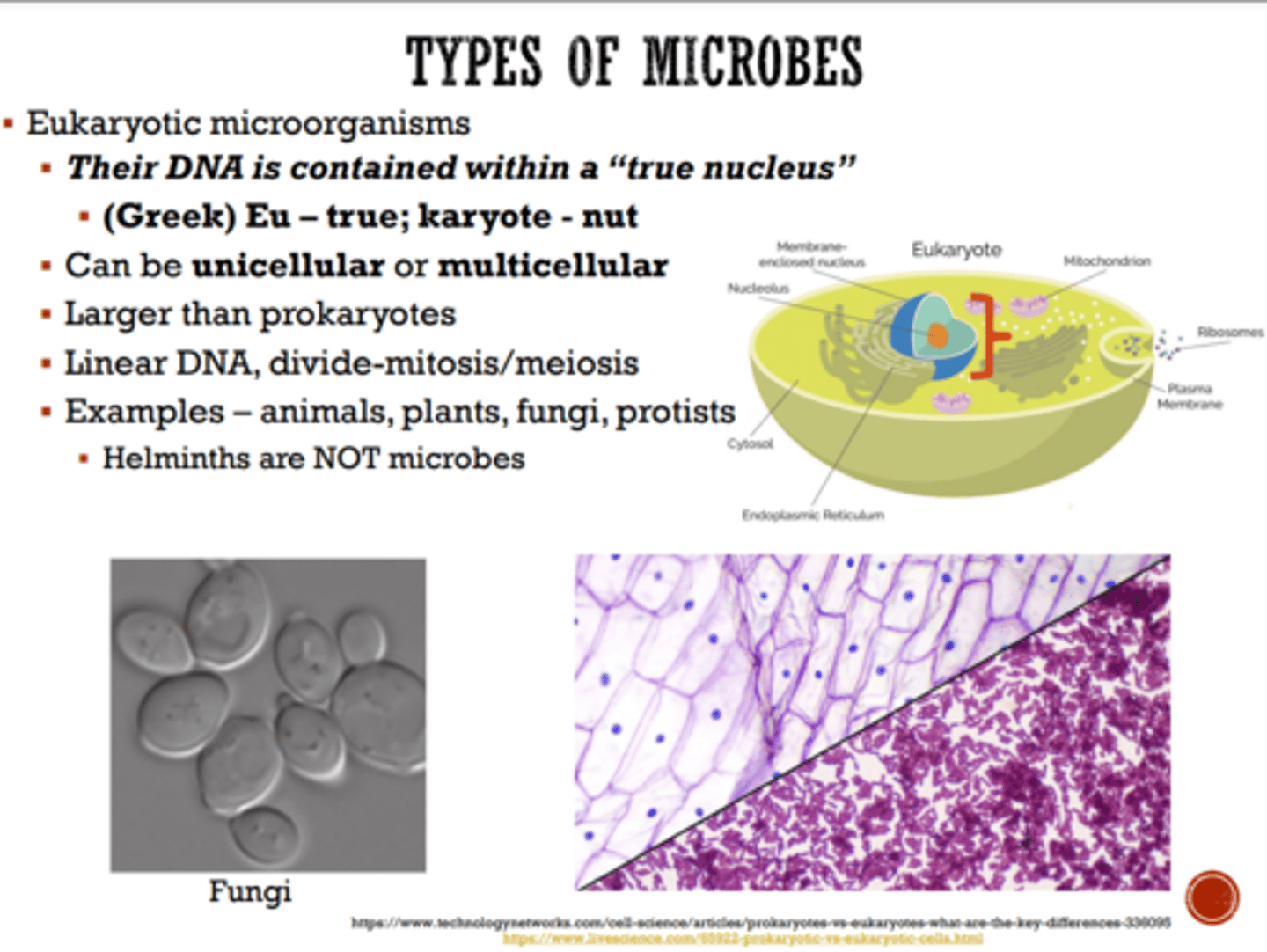
Viruses
Acellular - not composed of cells
Have proteins and genetic material
Inert outside of hosts; can multiply within
Many do not cause disease
Infects both prokaryotes and eukaryotes
Who was credited with the development of the first microscope
Robert Hooke & Antonie van Leeuwenhoe
credited with first microscopes
Who created the first simple microscope
Antonie van Leeuwenhoek
Who is credited with first use of a compound microscope
Galileo and Hook
Simple microscope
light passes through 1 lens (magnifying glass)
Compound microscope
light passes through 2 lenses. Magnification is affected by 2 lenses
Magnification
The ability of a lens to enlarge an image compared to the real object 10x means=10 times the original
Who was credited with the modern microscope
Joseph Lister credited with the modern light microscope
Light microscope
use light to visualize images
Calculate the magnification
Simple microscope - the magnification of the ocular lens (eyepiece)
Compound microscope: Objective lens x Ocular lens = magnification
Typically, Ocular lens = 10x Objective can be 4x, 10x, 40x
Parts of the microscope
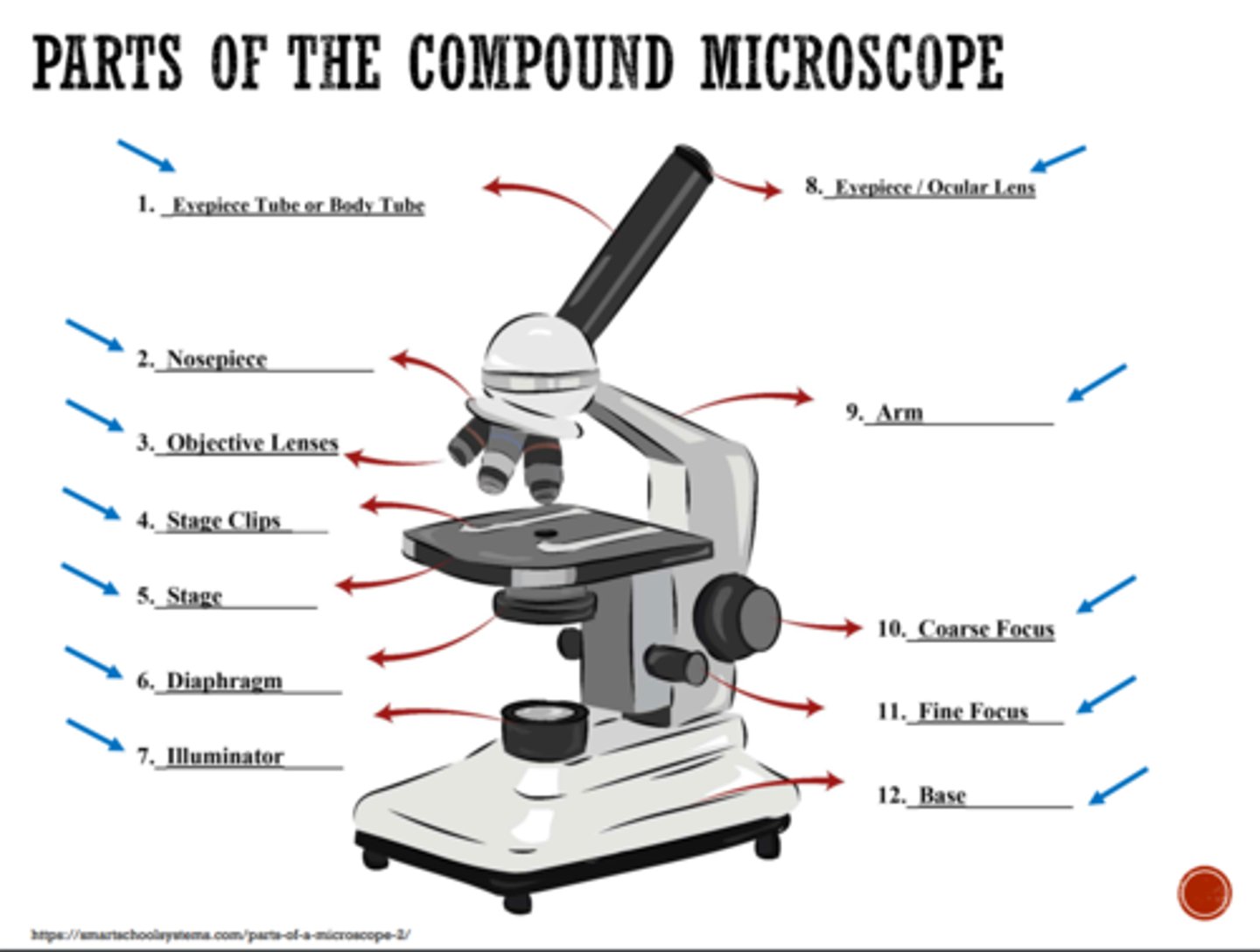
Resolution
100x objective lens require use of immersion oil...why?
Resolution - the ability to tell that two separate points/objects are separate.
Smaller lenses = higher magnification, less resolution (loss of light)
Smaller lenses, lower numerical aperture - ability to gather light.
